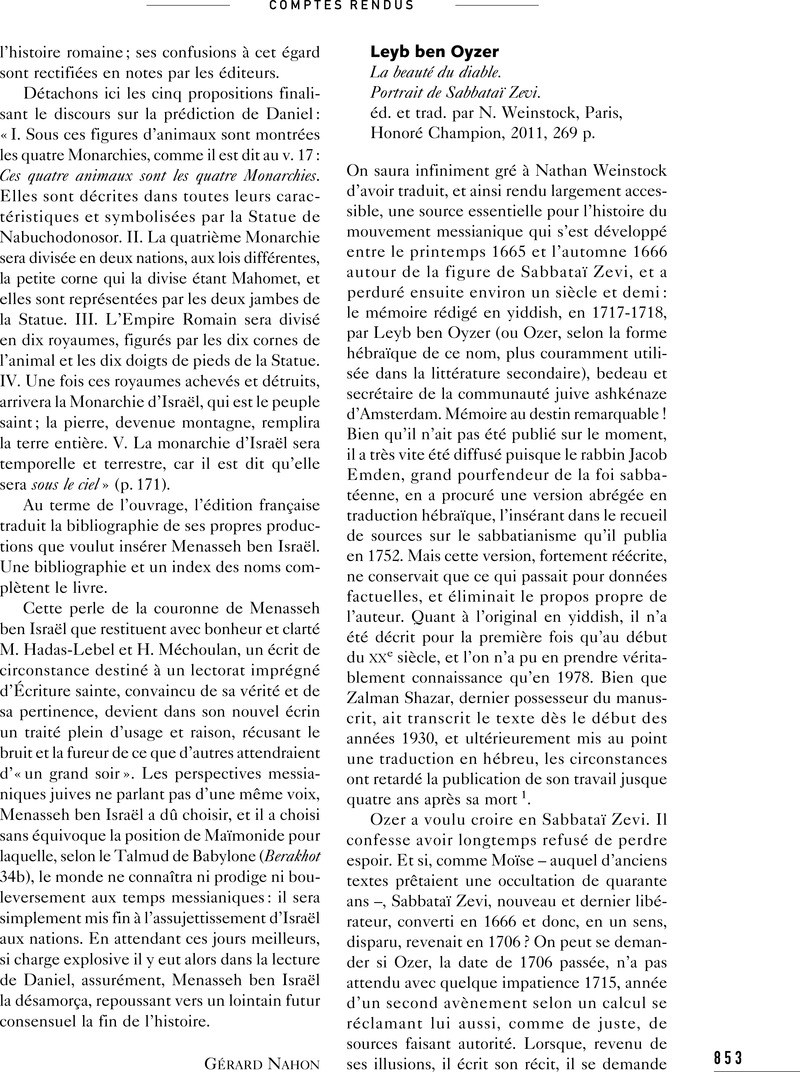No CrossRef data available.
Published online by Cambridge University Press: 20 January 2017

1- The Story of Shabbetay Zevi by R. Leib ben R. Ozer, Amsterdam 1711-1718, from the original yiddish manuscript with Hebrew translation, introduction et notes par Z. Shazar, éd. par S. Zucker et R. Plesser, Jérusalem, The Zalman Shazar Center, 1978 Google Scholar (en hébreu, avec le texte yiddish). Shazar avait bien entendu mis le manuscrit à la disposition de son ami Scholem, Gershom pour son Sabbataï Sevi: The Mystical Messiah, 1626-1676, Princeton, Princeton University Press, 1975.Google Scholar
2- Voir Heyd, Michael, « The ‘Jewish Quaker’: Christian Perceptions of Sabbatai Zevi as an Enthusiast », in Coudert-Jeffrey, A. A. et Shoulson, S. (éd.), Hebraica Veritas? Christian Hebraists and the Study of Judaism in Early Modern Europe, Philadelphie, University of Pennsylvania Press, 2004, p. 234–265.Google Scholar
3- À comparer avec l’enseignement qu’en tirait, à peu près au mêmemoment, le sabbatéen Néhémie Hayyon : « là où Joseph de la Reina a échoué, on peut réussir. Encore un effort ! » Voir Carlebach, Elisheva, The Pursuit of Heresy: Rabbi Moses Hagiz and the Sabbatian Controversies, Columbia, Columbia University Press, 1990, p. 93.Google Scholar